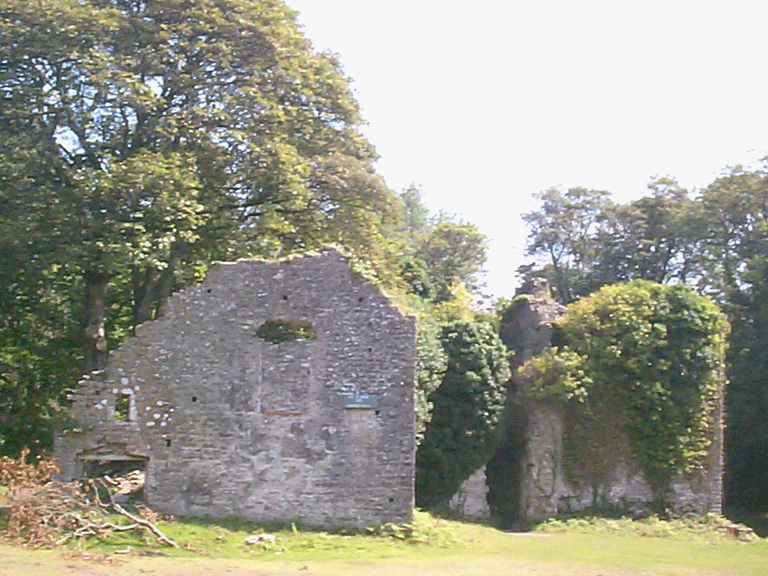Merthyr Mawr, Kenfig and Margam Burrows
014 Candleston

HLCA 014 Candleston
Manorial centre of Candleston Castle set within an area of mixed agricultural and wooded landscape (including Ancient Woodland) on the fringe of Merthyr Mawr Warren; relict archaeology: medieval and post-medieval settlement/fields (including fortified manor); buried archaeology; historic associations. Back to Map
Historic Background
The historic landscape area of Candleston is dominated by the remains of Candleston Castle, built c 14th century and occupied until the early 19th century. This was the fortified manor house of the de Cantelupe family. The site is defended by a D-shaped enclosure of the 14th century, crenellated as part of the early 19th century alterations which include a stable. The original 15th century structure comprised two parts: a single-pile range across the east end of the enclosure, with a tower added to the outside of the enclosure on the south. The Hall range, 14th century, was partly remodelled during c 1500; the first-floor hall of this date retains an impressive perpendicular chimneypiece with four-centred ogee arch constructed of the local green sandstone. The tower retains a pointed, chamfered arch into a ground-floor cellar, and adjacent mural stair and an externally corbelled fireplace among other features such as garderobe and remains of parapet corbelling of the roofs, blocked w opening at the stair-head, originally opening on to the wall-walk of the enclosure wall.
Historic Landscape Characteristics
Candleston comprises the Manorial centre of Candleston Castle and includes three South facing valleys adjoining Merthyr Mawr Warren. The area is characterised by varied but generally evolved/irregular field pattern with tracts of Ancient and other broadleafed woodland and 20th century forestry. The area is strongly characterised by relict archaeological features: ranging from the fortified manor of Candleston Castle, an important example of medieval/post-medieval vernacular architecture, with associated medieval and post-medieval agricultural landscape (including Candleston Farm). The area, like the adjacent HLCA 013, also has buried archaeological remains, mainly indicated by prehistoric find scatters. The area has historic associations with the de Cantelupe family.